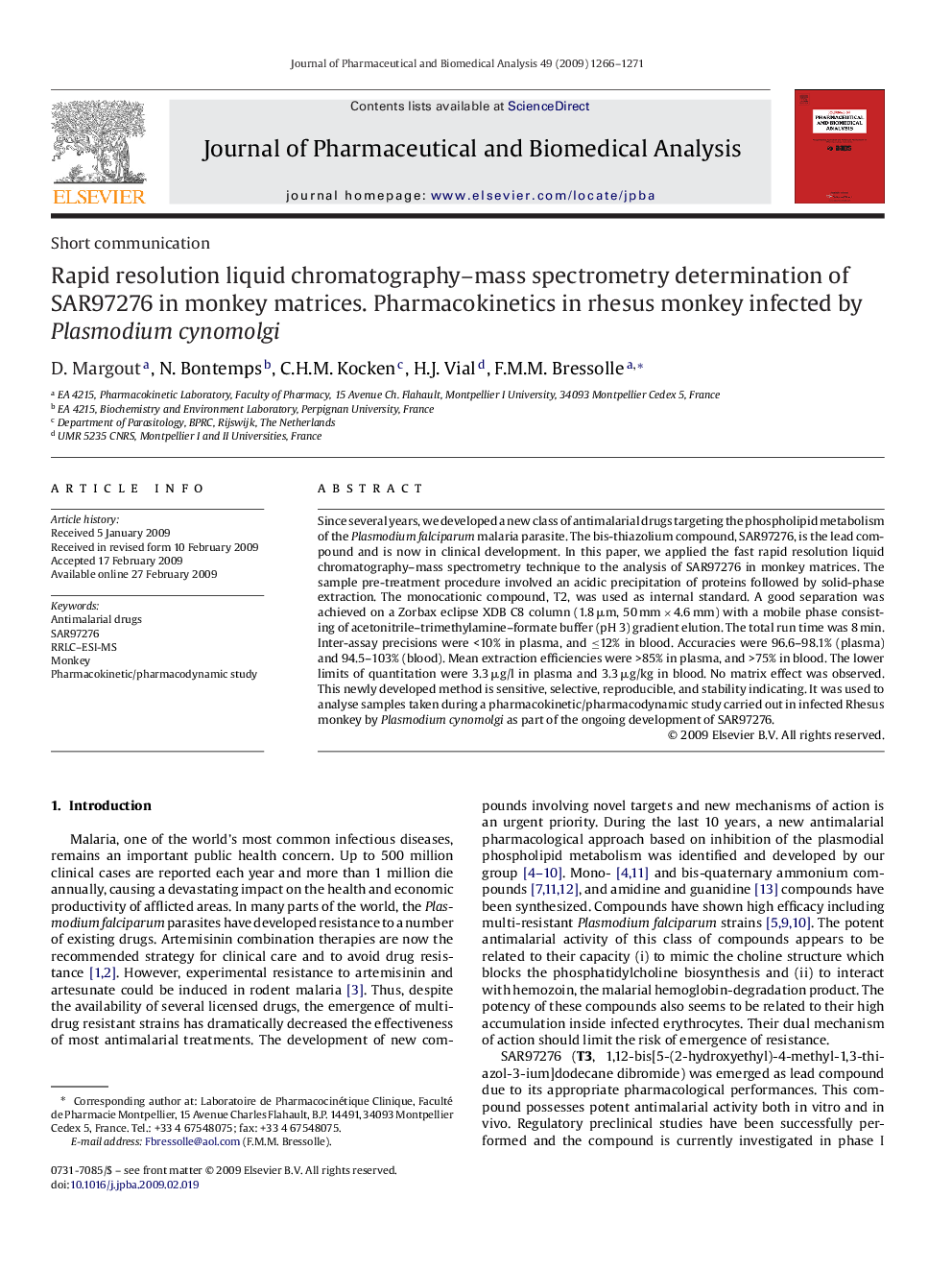| Article ID | Journal | Published Year | Pages | File Type |
|---|---|---|---|---|
| 10553622 | Journal of Pharmaceutical and Biomedical Analysis | 2009 | 6 Pages |
Abstract
Since several years, we developed a new class of antimalarial drugs targeting the phospholipid metabolism of the Plasmodium falciparum malaria parasite. The bis-thiazolium compound, SAR97276, is the lead compound and is now in clinical development. In this paper, we applied the fast rapid resolution liquid chromatography-mass spectrometry technique to the analysis of SAR97276 in monkey matrices. The sample pre-treatment procedure involved an acidic precipitation of proteins followed by solid-phase extraction. The monocationic compound, T2, was used as internal standard. A good separation was achieved on a Zorbax eclipse XDB C8 column (1.8 μm, 50 mm Ã 4.6 mm) with a mobile phase consisting of acetonitrile-trimethylamine-formate buffer (pH 3) gradient elution. The total run time was 8 min. Inter-assay precisions were <10% in plasma, and â¤12% in blood. Accuracies were 96.6-98.1% (plasma) and 94.5-103% (blood). Mean extraction efficiencies were >85% in plasma, and >75% in blood. The lower limits of quantitation were 3.3 μg/l in plasma and 3.3 μg/kg in blood. No matrix effect was observed. This newly developed method is sensitive, selective, reproducible, and stability indicating. It was used to analyse samples taken during a pharmacokinetic/pharmacodynamic study carried out in infected Rhesus monkey by Plasmodium cynomolgi as part of the ongoing development of SAR97276.
Keywords
Related Topics
Physical Sciences and Engineering
Chemistry
Analytical Chemistry
Authors
D. Margout, N. Bontemps, C.H.M. Kocken, H.J. Vial, F.M.M. Bressolle,
